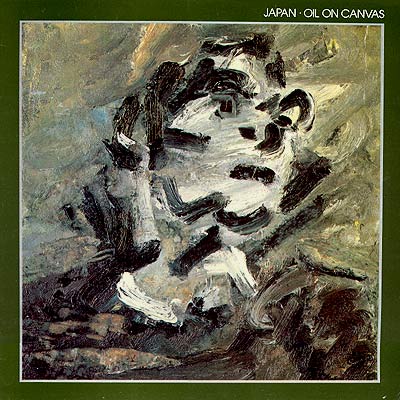

The final Japan release was sold and marketed as a live album, though actually it's a bit of a catchall -- it is indeed mostly from concerts, but also includes a variety of studio instrumentals and a re-recorded version of "Nightporter" mixed in to sound like it's part of the show. The various re-releases of the albums over the years confused matters further, with re-sequencings, the excision of cuts, and more adding to general confusion about the release (not to mention the fact that some reissues completely omitted where the shows were recorded anyway!). Two of the instrumentals, "Oil on Canvas" itself and "Temple of Dawn," are brief, gentle pieces by Sylvian and Barbieri respectively. "Voices Raised in Welcome, Hands Held in Prayer" is a more involving effort, combining a quiet, gamelan-inspired rhythm with found-sound samples from what appears to be a religious ceremony. As for "Nightporter," it's a nice enough new version but isn't notably different or varied from the earlier studio take. The remaining live cuts show that the exquisite tension and serene sounds in the studio were easily transferred to the stage in all their elegant complexity. The Tin Drum selections, which make up most of the release, make the case even more that Japan was as much a prog band as a glam one, Sylvian's captivating vocals flowing over Asian-derived scales and melodies, the guitar parts handled by guest performer Masami Tsuchiya, who also plays some keyboards. "Visions of China" sounds especially grand, Jansen's entrancing drumming seemingly impossible to be created and yet clearly existing. The extended introduction to "Ghosts," Karn's saxophone welling up from the distance like a siren call, is another highlight, along with the slightly rocked-up -- but only just -- "Methods of Dance."